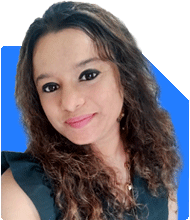Ramalingam Kalirajan |10908 Answers |Ask -Follow
Mutual Funds, Financial Planning Expert - Answered on Jun 04, 2024
He has an MBA in finance from the University of Madras and is a certified financial planner.
He is the director and chief financial planner at Holistic Investment, a Chennai-based firm that offers financial planning and wealth management advice.... more

Sir ji. I am 45,with no savings till now., can u advice how, what way to invest to have approx 3cr by 60 and what shall the amount to be invested. I am earning 35lpa
You earn Rs. 35 lakhs per annum.
It's great you are starting your financial planning now.
This goal is achievable with disciplined saving and smart investing.
Setting Clear Financial Goals
Having a clear financial goal is crucial.
You aim to accumulate Rs. 3 crores in 15 years.
Setting a clear target helps in creating a focused investment plan.
Calculating the Required Investment
To reach Rs. 3 crores in 15 years, let's calculate the required monthly investment.
Assuming an average annual return of 10% from a balanced portfolio, we can use the SIP (Systematic Investment Plan) calculator.
Systematic Investment Plan (SIP) Approach
Investing through SIPs in mutual funds is a disciplined approach.
SIPs allow you to invest a fixed amount regularly.
This approach benefits from rupee cost averaging and compounding.
Mutual Funds: A Key Investment Vehicle
Mutual funds are ideal for long-term wealth creation.
Equity mutual funds have the potential for higher returns but come with higher risk.
Debt mutual funds are less risky but offer lower returns.
A balanced or hybrid mutual fund invests in both, balancing risk and return.
Diversifying Your Investments
Diversification reduces risk by spreading investments across different asset classes.
A balanced portfolio might include equity mutual funds, debt mutual funds, and fixed deposits.
Diversification helps protect against market volatility.
Emergency Fund and Insurance
Before investing, establish an emergency fund.
Aim to save at least six months of expenses.
This fund covers unexpected expenses like medical emergencies or job loss.
Health insurance and life insurance are also crucial.
Health insurance covers medical costs, while life insurance secures your family's future.
Starting Your Investment Journey
Begin with assessing your monthly savings potential.
Create a budget to control expenses and increase savings.
Invest the surplus amount systematically in mutual funds through SIPs.
Creating a Balanced Portfolio
A balanced portfolio might include:
Equity Mutual Funds: For long-term growth potential. They have higher risk but can offer higher returns.
Debt Mutual Funds: For stability and lower risk. They offer moderate returns and reduce overall portfolio risk.
Fixed Deposits: For guaranteed returns and safety. Suitable for conservative investments.
Evaluating Risk Tolerance
Assess your risk tolerance before investing.
Equity investments come with higher risk but potential for higher returns.
Debt investments are safer but offer lower returns.
Understanding your risk tolerance helps in choosing the right investment mix.
Importance of Regular Review
Regularly review and adjust your investment portfolio.
Market conditions and personal financial situations change over time.
Periodic reviews ensure your investments remain aligned with your goals.
Tax Planning
Effective tax planning helps in saving money.
Invest in tax-saving instruments like Public Provident Fund (PPF) or National Pension System (NPS).
These not only provide returns but also offer tax benefits.
Consulting a Certified Financial Planner
Consider consulting a Certified Financial Planner (CFP).
A CFP can provide personalized advice based on your financial situation and goals.
They help in creating a comprehensive and tax-efficient investment strategy.
Calculating Monthly SIP for Rs. 3 Crores Goal
Assuming a 10% annual return, you need to invest a significant amount monthly.
Using a SIP calculator, the required monthly investment is approximately Rs. 67,000.
This figure might vary based on actual returns.
Adjusting Lifestyle and Increasing Savings
To meet the investment goal, you might need to adjust your lifestyle.
Identify areas where you can cut expenses and increase savings.
Prioritize your financial goal to ensure regular investments.
Benefits of Starting Early
Starting your financial planning at 45 still gives you a good runway.
The power of compounding can significantly grow your investments over 15 years.
Early and disciplined investing reduces financial stress and helps achieve your goals.
Conclusion
At 45, starting with no savings is challenging but achievable.
Set clear financial goals, create a balanced investment portfolio, and invest systematically through SIPs.
Regularly review your investments and seek guidance from a Certified Financial Planner.
Disciplined saving and smart investing can help you reach Rs. 3 crores by age 60.
Best Regards,
K. Ramalingam, MBA, CFP,
Chief Financial Planner,
www.holisticinvestment.in
You may like to see similar questions and answers below
Jinal Mehta | Answer |Ask -Follow
Financial Planner - Answered on Feb 25, 2024
Ramalingam Kalirajan |10908 Answers |Ask -Follow
Mutual Funds, Financial Planning Expert - Answered on Jul 17, 2024
Ramalingam Kalirajan |10908 Answers |Ask -Follow
Mutual Funds, Financial Planning Expert - Answered on Jul 19, 2024
Ramalingam Kalirajan |10908 Answers |Ask -Follow
Mutual Funds, Financial Planning Expert - Answered on Jan 05, 2025
Ramalingam Kalirajan |10908 Answers |Ask -Follow
Mutual Funds, Financial Planning Expert - Answered on Jun 20, 2025
Ramalingam Kalirajan |10908 Answers |Ask -Follow
Mutual Funds, Financial Planning Expert - Answered on Dec 20, 2025
Ramalingam Kalirajan |10908 Answers |Ask -Follow
Mutual Funds, Financial Planning Expert - Answered on Dec 20, 2025
Naveenn Kummar |237 Answers |Ask -Follow
Financial Planner, MF, Insurance Expert - Answered on Dec 20, 2025
Ramalingam Kalirajan |10908 Answers |Ask -Follow
Mutual Funds, Financial Planning Expert - Answered on Dec 19, 2025
Nayagam P P |10859 Answers |Ask -Follow
Career Counsellor - Answered on Dec 19, 2025
Ramalingam Kalirajan |10908 Answers |Ask -Follow
Mutual Funds, Financial Planning Expert - Answered on Dec 19, 2025
Ramalingam Kalirajan |10908 Answers |Ask -Follow
Mutual Funds, Financial Planning Expert - Answered on Dec 19, 2025
Ramalingam Kalirajan |10908 Answers |Ask -Follow
Mutual Funds, Financial Planning Expert - Answered on Dec 19, 2025
Radheshyam Zanwar |6751 Answers |Ask -Follow
MHT-CET, IIT-JEE, NEET-UG Expert - Answered on Dec 19, 2025
Radheshyam Zanwar |6751 Answers |Ask -Follow
MHT-CET, IIT-JEE, NEET-UG Expert - Answered on Dec 19, 2025













.jpg)











